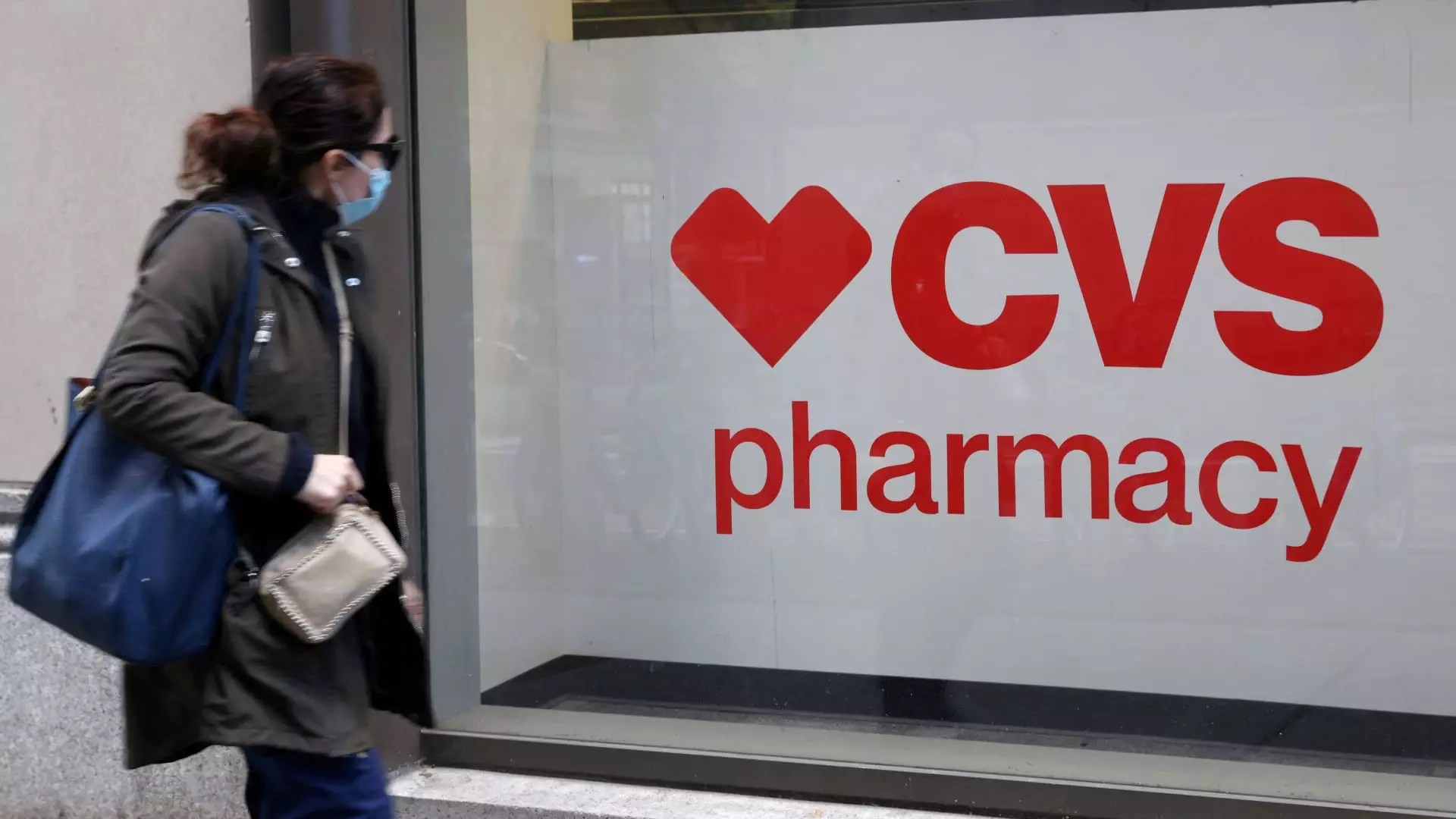CVS Health recently revealed its third-quarter financial performance, a significant moment as it marks the first financial results delivered under the leadership of newly appointed CEO David Joyner. While the company recorded some growth metrics, the overarching narrative suggests deepening challenges driven by escalating healthcare costs, which have begun to strain its profitability. This analysis will delve into the various components of CVS’s results, the implications of its challenges, and the strategic adjustments needed to rebuild investor confidence.
The earnings report from CVS Health elaborated on a mixed performance for the third quarter. Although the company achieved a revenue of $95.43 billion—a 6.3% increase compared to the same period last year—its net income sharply declined to $71 million, a stark drop from $2.27 billion in the previous year. Adjusted earnings per share (EPS) came in at $1.09, significantly below expectations of $1.51. This divergence highlights a considerable challenge for Joyner, who faces the daunting task of correcting course amid declining profitability.
Investors usually approach earnings reports with a mixture of anticipation and skepticism, but CVS’s results, particularly in the context of a concerning trend of guidance cuts over the past year, have exacerbated investor anxiety. The company is grappling with higher medical costs in its health insurance division, Aetna, reflecting a broader industry trend where healthcare utilization is escalating post-pandemic, particularly among senior patients who delayed medical procedures.
In a bid to reinvigorate investor trust and address the pressing challenges, CVS Health has made significant leadership changes, highlighted by the appointment of Steve Nelson as the new president of Aetna. With his experience as the former CEO of UnitedHealthcare, there are high expectations that Nelson will introduce robust strategies to manage costs effectively. Additionally, long-term executive Prem Shah has been tasked with overseeing various facets of CVS’s operations, including retail pharmacy and healthcare delivery. These changes aim to align operations and strategy for better efficiency and profitability.
However, the leadership transition simultaneously represents an urgent need for CVS to demonstrate immediate results. Joyner has articulated a commitment to credibility, emphasizing that any guidance offered will be realistic and attainable. This tact underscores an understanding that setting ambitious yet impractical targets only risks further erosion of investor confidence.
The crux of CVS’s challenges lies in its surging medical costs, prominently displayed in Aetna’s financials. The company reported a concerning adjusted operating loss of $924 million for the insurance unit this quarter, accompanied by a startling rise in its medical benefit ratio—a critical measure reflecting claims paid versus premiums collected. The ratio climbed to 95.2%, indicating that costs have outpaced premiums, which undermines profitability.
Moreover, CVS’s insurance business is navigating another layer of complexity attributed to premium deficiency reserves—anticipatory measures for future losses that were a significant factor in the company’s earnings this quarter. Such financial maneuvers can muddy the financial waters and complicate recovery efforts, raising questions among investors about the long-term sustainability of the business model.
In a fiercely competitive marketplace, the challenges facing CVS Health extend beyond its financials. Despite having a remarkable 27.3% share of the retail pharmacy market—an all-time high—the corporation is confronted by systemic pressures affecting profitability. The pharmacy and consumer wellness division did report a sales increase; however, external pressures such as lower prices from generic drugs and dwindling front-store volume hamper growth prospects.
The health services segment faces declining revenues, processing significantly fewer pharmacy claims compared to previous years. With Caremark as a crucial component of the health services division, the effectiveness of managing pharmacy benefit programs will play a vital role not only in financial recovery but also in maintaining competitive advantage in a tightening market.
As CVS Health navigates these turbulent waters under new leadership, a return to financial stability will likely hinge on a multifaceted approach. Central to this will be robust cost management strategies to mitigate medical costs while recalibrating the insurance business to ensure sustainable profitability. Joyner’s focus on achieving realistic and reliable guidance will be essential for rebuilding trust with investors.
Furthermore, communicating a clear strategy concerning operational restructuring and market positioning will also be vital. The additional store closures and substantial cuts to workforce numbers illustrate necessary adjustments, but transparency about the long-term implications will be essential for winning back stakeholder confidence.
CVS Health is at a critical juncture as it grapples with the pressures of higher medical costs and the significant changes in leadership. With strategic focus and effective management of resources, there emerges the potential for recovery; however, this will require time and concerted effort to translate current challenges into future successes.

